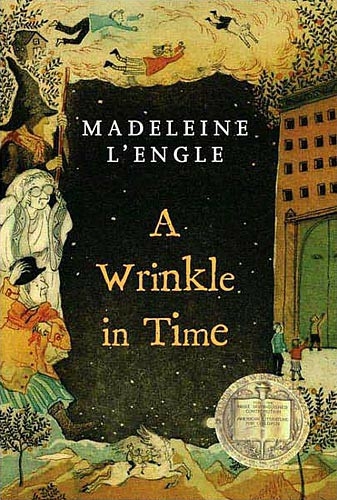CLEAR LAKE, Iowa (AP) – When Ashley Bruce Lumpkin moved to Clear Lake from Georgia, she was sad to see that there is no separate store in the community.
“The library here is great, but I’ve realized that I still like to own the books I love,” Bruce Lumpkin said. “There’s no independent bookstore to buy them, and the nearest one is like an hour away.”
Her desire to have a bookstore closer to her is what led to The Clear Lake Book Project, a mobile trailer with books for sale. Currently, the trailer is open on Thursdays at Main, but Bruce Lumpkin is looking to extend hours.
The Clear Lake Book Project also has a book club that meets on Mondays. The first book the group chose is “Where the Crawdads Sing” by Delia Owens.
The idea to open a mobile bookstore developed earlier this year when Bruce Lumpkin spoke with her husband, Sean Lumpkin. He saw the idea as something that would satisfy his wife’s longing for a bookstore as well as that of the community.
“My husband told everyone my idea before I was even ready to tell anyone my idea,” Bruce Lumpkin said with a smile.
“I was like,‘ I’ll support you. Whatever you want to do, I won’t be repulsed, ‘”Lumpkin told the Mason City Globe Gazette. “I don’t want to push her back with anything she dreams of, and that will help her.”
Bruce Lumpkin, who is self-employed as a website designer, has a business-minded background because of her family. With her creative talents and knowledge, she lacked only one piece: the trailer.
A week after developing and sharing her idea, Bruce Lumpkin found her trailer on a Facebook sales page during a trip in Minnesota. The 24-foot trailer has a ready floor, an electrical panel, and the walls were completely done.
It was exactly what she was looking for. The only problem was finding a vehicle to take the trailer.
“We drove home to borrow someone’s truck because we didn’t have a truck to take the trailer. It was a little crazy, ”said Bruce Lumpkin.
It took several weeks to renovate and decorate the trailer the way Bruce Lumpkin wanted it. She experienced delays due to the cold weather and lack of bookshelves.
“I couldn’t find them anywhere. Literally, no company you can think of – like Target, Walmart, IKEA – no one had them, ”said Bruce Lumpkin. “I had to hunt them down to find them.”
Bruce Lumpkin devised a way to use tension bars to prevent books from falling off the shelves as she moves the trailer. She said she found the idea by looking at the tips and tricks of campers. In total, Bruce Lumpkin needs 15 minutes to install and demolish.
The Clear Lake Book Project is full of a selection of used books and some new Bruce Lumpkin books that have spent six months running. She made sure to have a wide range of genres, even for children, and recognizable book titles and authors.
“If you buy a book from here, you’re probably supporting another small business,” Bruce Lumpkin said.
Bruce Lumpkin was happy with the reaction from customers. She is particularly pleased with people’s surprise at how current the books are.
“I’m picky about what I buy when I go to the store, as opposed to your grandmother’s books from the 50s, with which no one wants to read like‘ the man without a shirt, ’” Bruce Lumpkin said. “It was fun to know people are like, ‘Alas, you have really good ones here.’
“It’s really cool to see all the people excited (about the trailer),” Lumpkin said. “My favorite thing is to watch kids come, and they kind of get scared because they see ‘Dog’ or something.”
Bruce Lumpkin hopes to donate books to teachers and their classrooms. She added that she is excited to start making book donations when August comes.
“That was the gift part of it, because it’s not fun just to do a bookstore. I want to have a goal behind it, ”Bruce Lumpkin said.
“I just love reading, and I want more people to have the opportunity to find a book they really like,” Bruce Lumpkin said.
Download our apps today for all our latest coverage.
Get the latest news and weather right to your inbox.
Copyright 2022 Scripps Media, Inc. All rights reserved. This material may not be published, distributed, rewritten or redistributed.
Sign up for the Headlines Newsletter and receive up to date information.
What did WPA stand for?
Administration of the Work Progress. On April 8, 1935, Congress passed the Relief Appropriation Act of 1935, the labor relief bill that funded the Works Progress Administration (WPA).
What did the WPA do primarily? The Works Progress Administration (WPA; renamed in 1939 as the Work Projects Administration) was an American New Deal agency that employed millions of job seekers (mostly men who were not formally educated) to carry out public works projects, including the construction of public ones. To see also : The owner of a local business is asking for help after his computer is stolen. buildings. and roads.
What was the WPA during the Depression?
Works Progress Administration (WPA), also called (1939–43) Work Projects Administration, a work program for the unemployed that was created in 1935 under U.S. Pres. The New Franklin D. Roosevelt Agreement.
How much did WPA workers make?
Roosevelt’s employment program employed more than 8.5 million people. For an average salary of $ 41. To see also : Gender-affirming healthcare is simply good healthcare.57 per month, WPA employees built bridges, roads, public buildings, public parks and airports.
Is the WPA still around today?
The WPA closed in June 1943. At that time, unemployment was less than two percent. See the article : These are the 9 new books you should read in July. Many Americans crossed over to work in the armed services and defense industries.
Does the WPA still exist today?
Most of these are still in use today. The number of WPA infrastructure projects included 40,000 new and 85,000 improved buildings. These new buildings included 5,900 new schools; 9,300 new auditoriums, gyms, and recreational buildings; 1,000 new libraries; 7,000 new dormitories; and 900 new arsenals.
Is the Bookwoman of Troublesome Creek a true story?
The Book Woman of Troublesome Creek is a 2019 novel by Kim Michele Richardson. The story is a fictionalized account of real issues in the history of eastern Kentucky.
Is cussy Mary Carter a real person? Melissa Decker Cussy Mary Carter was not a real person. Her character was based on real people who had a genetic condition, but, the character is not real and she was not based on an individual. I loved the “Bookwoman of Troublesome Creek” but, I would never expect to find a crossover into a different novel.
Is there a movie of The Book Woman of Troublesome Creek?
It’s a movie too! You know what I’m going to do this weekend! I also read Kim Michele Richardson’s The Book Woman of Troublesome Creek. I love reading books about books, so I was eagerly looking forward to getting started.
Is The Giver of Stars similar to The Book Woman of Troublesome Creek?
It’s a fascinating time period and the characters in both are well created. The Troublesome Creek Bookworm delves deeper into the plight of the Blue People of Kentucky while Donor of Stars is more focused on a WPA-packed multi-library program with aside to the Blue People. Barbara I read both and enjoyed both.
Is the book The Giver of Stars a true story?
THE GIFT OF STARS is based on the true story of the Packhorse Librarians of Kentucky.



